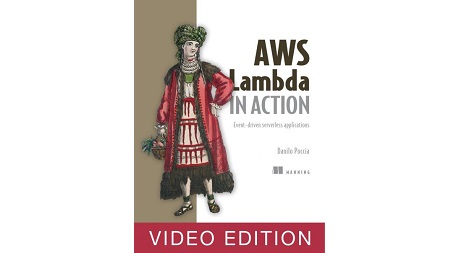
English | MP4 | AVC 1280×720 | AAC 44KHz 2ch | 8h 42m | 1.49 GB
AWS Lambda in Action is an example-driven tutorial that teaches you how to build applications that use an event-driven approach on the back-end. Starting with an overview of AWS Lambda, the author moves on to show you common examples and patterns that you can use to call Lambda functions from a web page or a mobile app. The second part puts these smaller examples together to build larger applications. By the end, you’ll be ready to create applications that take advantage of the high availability, security, performance, and scalability of AWS.
With AWS Lambda, you write your code and upload it to the AWS cloud. AWS Lambda responds to the events triggered by your application or your users, and automatically manages the underlying computer resources for you. Back-end tasks like analyzing a new document or processing requests from a mobile app are easy to implement. Your application is divided into small functions, leading naturally to a reactive architecture and the adoption of microservices.
Inside:
- Create a simple API
- Create an event-driven media-sharing application
- Secure access to your application in the cloud
- Use functions from different clients like web pages or mobile apps
- Connect your application with external services
Requires basic knowledge of JavaScript. Some examples are also provided in Python. No AWS experience is assumed.
Table of Contents
01 Running functions in the cloud
02 Introducing AWS Lambda
03 Functions as your back end
04 Event-driven applications
05 Calling functions from a client
06 Your first Lambda function
07 Writing the function
08 Testing the function
09 Executing the function through the Lambda API
10 Your function as a web API
11 Creating the API
12 Testing the integration
13 Using resource paths as parameters
14 Using the API Gateway context
15 Summary
16 Managing security
17 Understanding policies
18 Using policy variables
19 Using standalone functions
20 Subscribing functions to events
21 Configuring permissions
22 Creating the function
23 Using binaries with your function
24 Implementing the function
25 Scheduling function execution
26 Summary
27 Managing identities
28 External identity providers
29 Using policy variables with Amazon Cognito
30 Calling functions from a client
31 Giving permissions to the Lambda function
32 Calling functions from a mobile app
33 Calling functions from a web browser
34 Designing an authentication service
35 The event-driven architecture
36 Working with Amazon Cognito
37 Encrypting passwords
38 Implementing an authentication service
39 Automating initialization and deployment
40 Signing up new users
41 Adding more features to the authentication service
42 Changing passwords
43 Building a media-sharing application
44 Consolidating functions
45 Defining an object namespace for Amazon S3
46 The client application
47 Reacting to content updates
48 Why event-driven
49 Starting from the front end
50 What about the back end
51 Reactive programming
52 The path to microservices
53 Scalability of the platform
54 Estimating costs
55 Summary
56 Improving development and testing
57 Logging and debugging
58 Using function versioning
59 Development tools and frameworks
60 Apex serverless architecture
61 Simple serverless testing
62 Automating deployment
63 Event-driven serverless continuous deployment
64 Deploying with AWS CloudFormation
65 Multiregion deployments
66 Automating infrastructure management
67 Reacting to events
68 Multiregion architectures and data synchronization
69 Calling external services
70 Using IFTTT Maker Channel
71 Sending messages to a Slack team
72 Receiving events from other services
73 Handling events from Slack
74 Handling events from Twilio
Resolve the captcha to access the links!